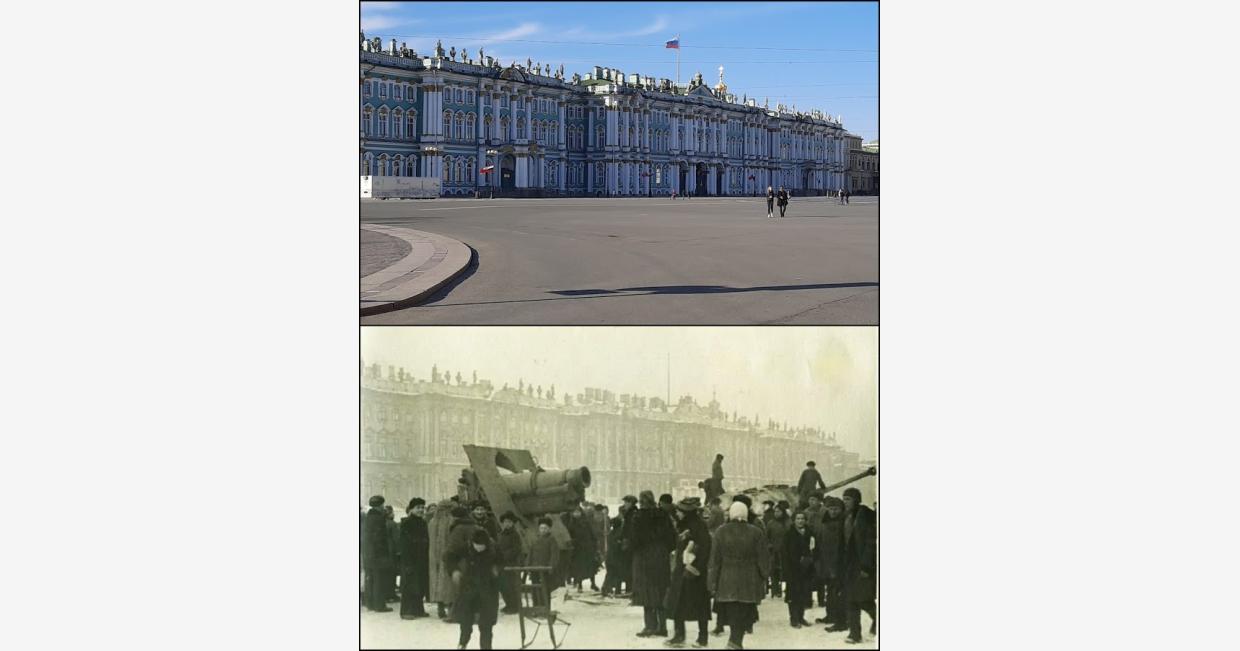Today, 78 years ago.
Palace square, Leningrad. February 1944 / Palace square, St. Petersburg. I took this picture in May 2020.
Leningraders attending an exhibition of trophy German weapons captured during the Krasnoye Selo-Ropsha offensive in January 1944.
From the diary of Boldyrev Alexander Ivanovich, 33. Senior Research Associate at the Hermitage museum in the 40's, later - Professor of Oriental Studies at the Leningrad State University. Meritorious Scientist of Tajik SSR.
Entry from January 21, 1944:
"January 21, 1944. Some trophies have been rolled out to the Palace square today: a kind of a tank or a little SPG, huge yellow mortar, a smaller gun, a 406mm shell, ersatz felt boot with a wooden(?) sole and warm thick felt wool inside. No inscriptions, no explanations, only a starved looking half-disabled soldier with an SMG trying to hold a crowd of many hundred at bay. It's shocking that they have a 1916 Schneider-Creusot mortar and the smaller one is a 1936 Skoda. Is it really characteristic of German heavy gear around Leningrad in 1943-1944?
My notes are called "Siege Chronicle". The extermination and routing of besieging German forces which remain around the city is likely going to be a matter of a few days. After that I'll have to write my conclusion and put a big full stop mark at the end. But there will likely be many more events in the future; today, from the moment the darkness set in, masses of troops started marching down the Zagorodny prospekt, and amid the gigantic tanks there are colossal monster-guns. They are moving towards the Finnish side too."
From the article "German siege artillery around Leningrad" by V.Mosunov:
"When the Soviet offensive from Leningrad began in January 1944, a serious threat loomed over the German siege artillery grouping. Although the Germans managed to evacuate part of the guns, by January 20, 1944 enemy losses amounted to 8 210mm and 38 220mm mortars. Besides, one 280mm "Short Bruno" railroad gun was lost along with several platforms and carriages for 305mm mortars, one Czech 240mm gun and 6 210mm K38 guns. Unfortunately, the Red Army was not able to completely capture or destroy the grouping".

